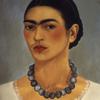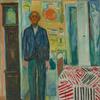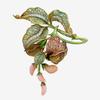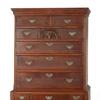Promote, Tolerate, Ban: Art and Culture in Cold War Hungary
- CULVER CITY, California
- /
- May 06, 2018
The Getty Research Institute and the Wende Museum of the Cold War have partnered to organize the exhibition Promote, Tolerate, Ban: Art and Culture in Cold War Hungary, drawing on the two institutions’ complementary collections of art and archives from the period. On view at the Wende Museum of the Cold War from May 20 through August 26, 2018, the exhibition explores a time in Hungary when the state cultural policy simultaneously celebrated modernism and freedom of expression while imposing censorship and promoting propaganda.
“Drawing from two complementary collections of post-war Hungarian art and ephemera, this exhibition offers a new look at a distinct time and place in history and art history,” said Thomas W. Gaehtgens, director of the Getty Research Institute. “Promote, Tolerate, Ban, as well as the Getty publication of the same name, will become a landmark in research and curating related to Cold War Hungary. We’re delighted to partner with the Wende Museum of the Cold War on such a worthy endeavor.”
Cold War Hungary, aligned with the Soviet Union since 1948, was bordered by four Eastern bloc countries and Austria to the West. After a twelve-day uprising against Soviet rule in 1956, Hungary’s art and culture were subjected to the cultural policy referred to as “Promote, Tolerate, Ban” which was relatively tolerant and liberal, yet anchored in government guidelines and censorship.
“The exhibition reveals the creative and sometimes subversive ways people lived, resisted, made art, and nurtured a complex culture beneath and beyond official doctrine,” said Wende Museum founder and director Justinian Jampol.
The exhibition juxtaposes remarkable artworks, pioneering films, and vibrant everyday materials from advertisements to political posters to scrapbooks to explore how artists responded to the contradictory social, political, and cultural conditions of Hungary between 1956 and 1989. These provocative artworks masked a double standard — while promoting ideals of socialist progress and a modern lifestyle, the regime ruled through manipulation, censorship, and propaganda.
In 2010 both the Wende Museum and the Getty Research Institute (GRI) acquired complementary art and cultural artifacts from Hungary during the period between the end of World War II and the early 1990s. The GRI received six hundred photographs, books, and ephemera from photo-historian Michael Simon, a Hungarian émigré who came to the United States in 1957. With the intention of retracing the history of Hungarian photography, Simon took several trips to Hungary starting in the 1970s. He interviewed photographers and visited many libraries and museum collections, nationally and internationally. Michael and his wife, Carol Simon, amassed a significant collection of photographs by Hungarian photographers over his 25 years of research.
The same year that this important archive came to the Getty Research Institute, the Wende Museum of the Cold War began collecting Hungarian art and artifacts, including Socialist Realism and modern paintings, prints, posters, figurative sculptures, ceramics, street signs, and other ephemera produced as part of state-sponsored commissions during the Mátyás Rákosi and János Kádr regimes from the mid-1940s to the late 1980s. The Wende Museum’s collection of Hungarian art was further enhanced through subsequent acquisitions and donations, including from Hungarian-born, Los Angeles-based, collector Judith Hoffman.
Exhibition curators Isotta Poggi, assistant curator of photographs at the Getty Research Institute, and Cristina Cuevas-Wolf, resident historian at the Wende Museum of the Cold War, began investigating the intersections and correlations in these two collections in 2013. The resulting exhibition and publication juxtaposes different media to bring fresh perspectives on art and culture in Cold War Hungary.
In conjunction with the exhibition Getty Publications has published the book Promote, Tolerate, Ban: Art and Culture in Cold War Hungary, edited by Cristina Cuevas-Wolf and Isotta Poggi (Getty Publications, $49.95, hardcover), which looks at various facets of artistic life in Hungary before the fall of the Soviet Union to untangle the stories of practitioners who both resisted and acquiesced to state law. From an examination of documentary evidence of event-based art to a first-person account from Hungarian artist and critic Geza Perneczky, the essays in this book reveal a broad range of artistic practices and ideologies that came out of such a repressive yet fertile time in Hungarian history.
At the Wende Museum of the Cold War,
10808 Culver Blvd, Culver City, CA 90230
May 20 to August 26, 2018
For more information, call (310) 216-1600, visit www.wendemuseum.org









100x100_c.jpg)





